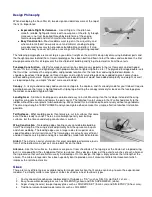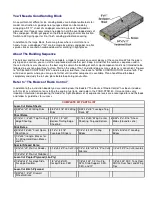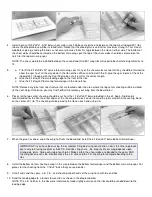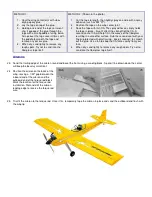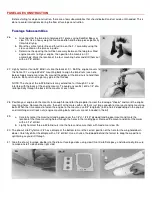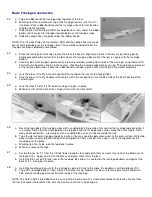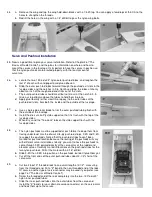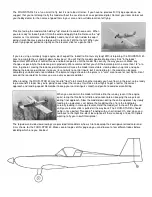
.
11. Carefully carve the top of the trailing edge to match the slope of the top T.E. sheeting using an X-Acto #26 whittling blade.
Wrap the top of the blade with masking tape (to protect the sheeting), leaving about 1/2" exposed at the base. Use the
masked portion to guide the blade at the corred angle. Final sand the T.E. so that the back edge of the wing is about 1/4"
thick (same as the ailerons).
12.
Glue the die-cut Lite-Ply wingtip to the
outboard end of the wing panel.
(Don't be tempted to omit the wingtip to
save weight. The plywood is necessary
to keep the covering material from
"sucking in" the end rib.)
OPTIONAL:
If you prefer rounded wingtips over the square ones, simply add a balsa
block to the wingtip (instead of the Lite-Ply part), then carve and- shape
as desired.
13.
a. Sand the top center sheeting smooth. (The bottom center sheeting is sanded in step 21.)
b. Position the die-cut Lite-Ply Aileron Servo Cutout Guide (ASCG) on the inboard W-1 wing rib. The top of the ASCG
should be flush with the top of the center sheeting, and the notches on the ASCG should fit around the main wing
spars. Trace around the ASCG with a sharp pencil.
c. Remove the guide, then measure and mark the cutout area on the top center sheeting using the dimension shown in
the photo. Using a modeling knife, carefully cut out the outlined area. This step accomplishes two things. First, it
clears an area for the aileron servo, and second, it provides an open area between the main wing spars for the
dihedral brace.
14.
Repeat steps 1 through 13 to build the opposite wing half.
Joining The Wing Panels
15.
a. Trial fit the two wing halves with the dihedral brace installed between the main wing spars. Be certain that the
dihedral brace is not preventing the panels from making solid contact with each other at the center. If necessary, trim
or sand the dihedral brace for a snug fit.
b. Glue the dihedral brace into ONE of the wing.panels. Make certain that it is positioned accurately between the main
wing spars.
c. Use slow CA or epoxy (either 5-minute or slow-dry) to join the two wing panels. Apply glue to the end ribs and the
exposed edges of the dihedral brace, then carefully slide the other wing panel into place.
Before the glue dries, make certain that the L.E. and T.E. of each panel are aligned. The dihedral angle of 20 per
wing panel will be automatically built-in by the dihedral brace. If you want to check the angle, place the wing on a
table so that one side sits flat, and the other side is raised. The distance from the table to the bottom of the wingtip
should be 2", but a variation of up to 1/4" either way is acceptable. The most important thing is to have a solid joint at
the wing center with no gaps.
Summary of Contents for Four-Star 40 SIGRC44
Page 1: ......


